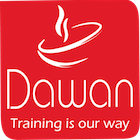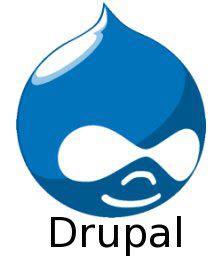Goals
- Knowing how to install Drupal, configure it and administer it on a daily basis.
- Know how to create a complete theme.
Program
History and comparison with other CMS
Content Management System (CMS): operation and
benefits Operating principle of Drupal
Procedure for installing and activating modules
Initial configuration, site language
Managing the translation of the interface
Having several with a single installation by Drupal
Workshop: Installing Drupal
Creating and publishing pages and articles
Establish a WYSIWYG editor
Manage input formats (text, limited html, …)
Implement rewrite filters (filter URLs, line break converter, …)
The additional content modules (books, forums, blog …)
Create a new type of content, publication options
Add
fields to it Additional field type module (date, entity reference, …)
Workshop: Creation of its first content
Use taxonomy to organize content
Presentation of the region and block system
Administration of blocks, creation of personalized blocks
Restrict the display of blocks in relation to the context
Management of menus, links, urls and aliases
Automatic suggestion of aliases to from tokens
Workshop: Structuring the navigation on the site
Create, activate and block users
Configure registration mode
Distribution of roles and permissions
Workshop: Set up access to the site
Generate navigation pages
The different types of output (page, block, rss feed, …)
Configure the format (Grid, list, table, slider, …)
Individually configure the fields
Filter, order the results, display the visitor
filters Manage context filters
Workshop: create a view on articles by author
Back up the site (files and database)
Put the site in maintenance
Manage module and core updates
Go back to a backup
Workshop: create a view on articles by author
Applying an existing theme
Configuring the theme
Operating principle of CMS
Render table and template engine
Inspect and manipulate the page with the integrated tools of browsers
Workshop: Exploration of an existing theme
Anatomy of a theme
Create a sub-theme and rely on a kickstart
How template files work
Layout with CSS, some essential techniques
Make your site responsive
Rely on Drupal class sets to optimize its rules
Manage specific contexts via template suggestion
Workshop: Create your first theme
Integration of the color module
Overload the theme functions
Define variables through the preprocessors
Workshop: Various advanced customizations
Addition of sources in the theme
Manage versions of jQuery in Drupal
Presentation of the DOM
Presentation of the event handler
Selection and manipulation of the DOM with jQuery
User interaction
Workshop: Dynamically display the primary menu using jQuery
Passing of the certification (if foreseen in the financing).
Duration
5 days
Price
£ 2172
Audience
All
Prerequisites
Knowledge of HTML and CSS, notions of programming and PHP
Reference
OPE1128-F
Sessions
Contact us for more informations about session date

